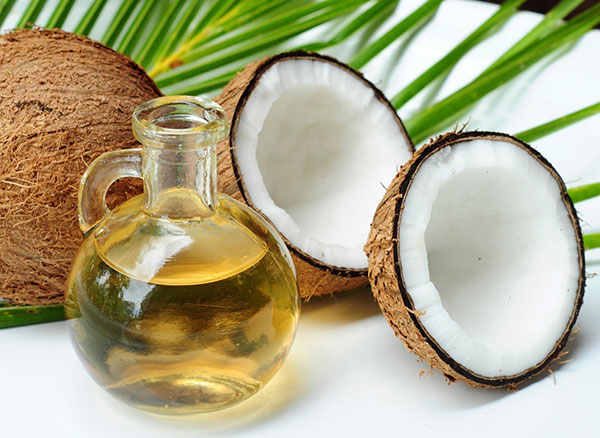The treatments used to control candidiasis vary considerably depending on several factors:
– The anatomical site of infection;
– Underlying disease of candidiasis;
– The development of the immune system;
– Risk factors who develop candidiasis;
– The specific characteristics of candidiasis responsible for infection;
– Resistance or susceptibility of candidiasis species to certain antifungal drugs.
What causes it?
The main cause of candidiasis includes yeast overgrowth in the gastrointestinal tract as a result of prolonged use of antibiotics. It occurs every time antibiotics are used for a long period of time. Therefore, it is necessary to administer antibiotics with a supplement of acidophilus to increase the likelihood that healthy bacteria remain in the body and prevent fungal overgrowth.
Another reason may be the diet. When you eat foods high in refined sugar, it increases the risk of developing candidiasis. Sometimes even limiting healthy food such as fruits (that have a higher sugar content than other foods) is recommended if you suspect candidiasis.
Symptoms:
The disease can grow in a certain area of the body, but once they start to multiply beyond normal limits, undiagnosed and untreated can cause more trouble because it may enter the bloodstream and can affect vital organs.
Some of the most common manifestations are:
– Headache / migraine;
– Gastrointestinal problems such as acid reflux, indigestion and bloating;
– High level of fatigue;
– Rectal and vaginal itching;
– Diarrhea or constipation;
– Chronic pain;
– Change in mood, such as depression, anxiety and irritability;
– Acne and eczema.
You can avoid the suffering caused by multiple medication or natural treatment options. Most of the women who experienced the inconvenience posed by candidiasis infection have been using (without prescription) creams that can be applied directly to the affected area.
Sometimes, oral medications are recommended if using creams brings no results, or if the disease occurs in other areas of the body.
Herbal treatments:
– Garlic – Garlic contains a number of antifungal compounds that are rapidly destroying fungus. Garlic stimulates immune function and is beneficial in the long-term treatment for chronic candidiasis manifestations. There are two ways to use this treatment. Cut garlic in half and rub the affected areas. This can cause burns and stings. If the reaction is too intense, cut three cloves of garlic and insert them into half a cup of olive oil for at least 24 hours. Use the resulting composition to the affected areas for three times a day.
– Oregano oil – oregano essential oil fight with fungus that occur while the disease is installed. It is even more effective than caprylic acid in inhibiting fungal infection.
– Goldenseal – is a plant that can be used for treatment and prevention. It contains high levels of an alkaloid called berberine, which has direct antifungal action.
– Coconut oil – is an effective antifungal. Studies have shown that virgin coconut oil is as effective as fluconazole, a pharmaceutical drug widely used for treatment. Gently massage the affected area, by applying a few drops of coconut oil once a day.
– Yogurt – vaginal candidiasis can be treated with yogurt, since it results in bacterial decomposition results in peroxide. It destroys the bad fungus and restore their equilibrium. To use, soak a tampon with plain unsweetened yogurt and insert it into the vagina. Let it to cure overnight. Do this until the symptoms disappear.
– Vinegar and apple cider – when the mouth is affected, rinse your mouth with an equal mixture of vinegar and apple cider every three hours, until infection symptoms disappear.
– Sage and rosemary – a concentrated tea of these herbs is an effective treatment. Add a tablespoon of sage and rosemary to a cup of boiling water and leave on for 20 minutes. Strain the tea and rinse the affected area several times a day.
Treatment for chronic candidiasis:
– Nutrition and diet – changes in diet can help the multiplication of yeast in the body. Intake of refined sugars and carbohydrates that allow candidiasis to grow in the intestine should be minimized. Diet can include white flour and fruit juices. Foods such as cheese and bread may contain fungus and molds. Removing them from the diet can help reduce sensitivity reactions to fungi.
– Medical treatment – antifungal medicines can be effective in treating chronic candidiasis. They may take the form of oral solutions for rinsing, tablets, vaginal ovules and creams. Medications for vaginal candidiasis that can be purchased without a prescription include miconazole, clotrimazole and tioconazole. There are antifungal creams that combine corticosteroids to treat any itching or inflammation.
– Complementary and alternative supplements – probiotics are healthy bacteria that can help to prevent the multiplication of fungus and bacteria balance in the gut and mucus membranes. Products with lactobacillus acidophilus probiotics are an effective example for treatment.
Vitamin C, vitamin E, vitamin B complex and folic acid help strengthen the immune system and support the body in fighting chronic fungal infections. Recurrent episodes often occur in people who are deficient in calcium. As such, the use of calcium supplements may help reduce the risk factors.


